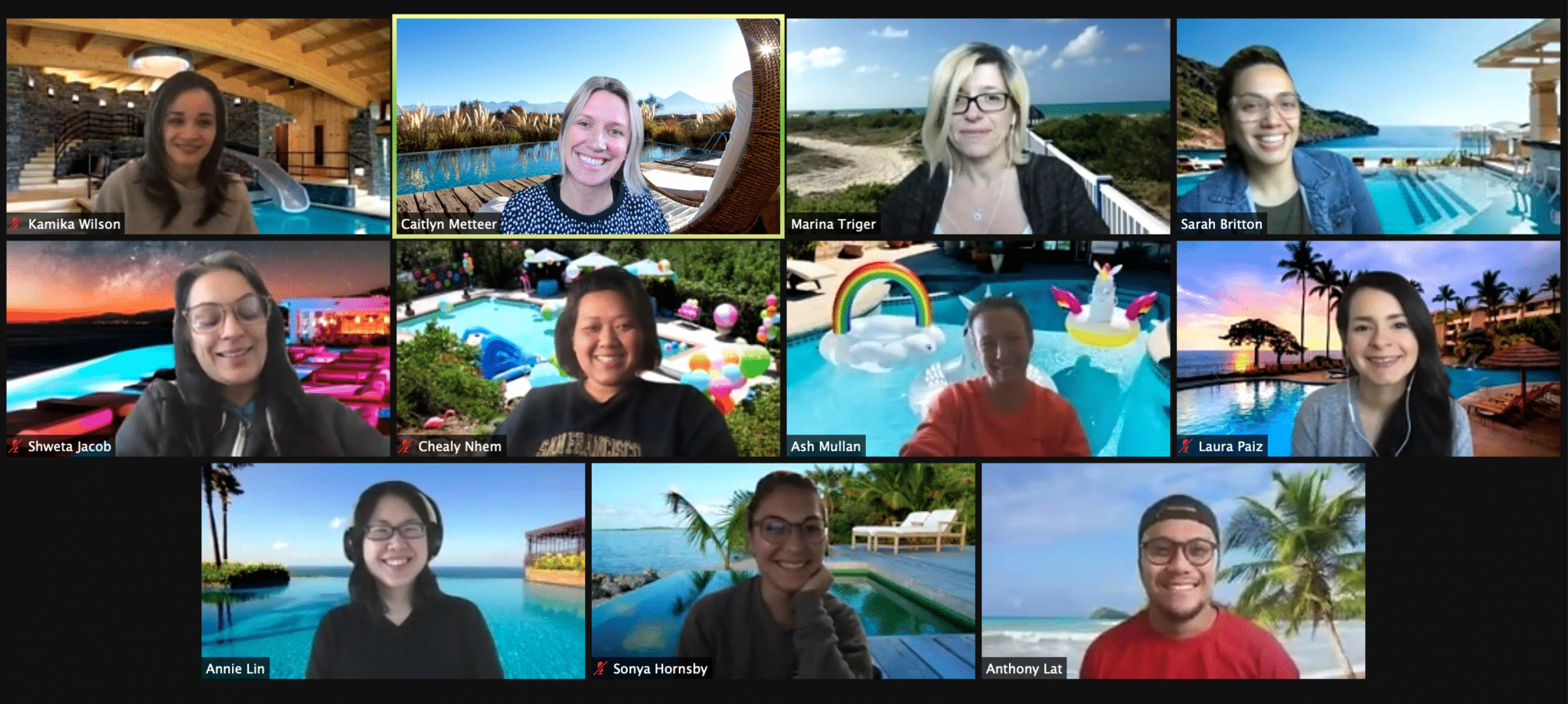Like recruiting teams everywhere, our team was at the forefront of guiding the company through an unclear future. Grounded in flexibility and reprioritization, Lever’s Manager of Recruiting, Caitlyn Metteer, wasted no time stepping up and into a leadership role to guide the team through many pivots and transitions along the way. Metrics and goals were reset overnight, processes and systems reconfigured, and new team members onboarded.
Here are Lever’s top pivots as a recruiting team that your team can adopt too.
Pivot #1 — Refocusing on Imminent Objectives
In the throes of transition, Metteer, a two-year Lever veteran, poured herself into a new role hitting the ground running by pivoting quickly to remote operations. This meant getting a sense of the “pulse of the house,” and figuring out how the team as a whole would operate going forward.
A number of initiatives had been planned pre-pandemic that now needed to be paused, such as certain branding and hiring goals. However, the recruiting and talent teams quickly refocused their energies to support imminent initiatives. “We had to look at the immediate goals for Lever and think about what we could do to provide support, oftentimes by leaning into work outside of direct recruiting,” explained Metteer.
Some new objectives included:
- Assisting the marketing team on all upcoming events.
- Supporting the company on a remote culture event to bring people together.
- Rethinking onboarding processes for newly hired employees.
- Finding better ways to engage with employees as it relates to performance, hiring, and efficiency.
Pivot #2 — Learning to Recruit Virtually
“When looking at our recruiting goals, we knew that as a leaner team, we’d need to be able to close roles out even more quickly to mitigate impact on the business,” Metteer continued. This included assessing and streamlining current interview processes. Shifting to full virtual interviews while maintaining the integrity of the candidate experience to ensure they were set up for success was no easy feat. It involved weaving in aspects of the previous interview process and in quick time updating formats and materials that would be more useful to candidates when remote.
Some changes the team quickly made to the interview process included:
- Shortening blocks of time candidates would sit in an interview. For instance, a 5-hour block would no longer be productive for many remote candidates.
- Sending PDFs to prepare candidates every step of the way.
- Assigning each candidate one point of contact on the team to help guide their journey.
“All throughout the process, maintaining a human touch was critical to our success. Coming to interviews with more empathy and understanding made all the difference,” says Metteer.
Pivot #3 — Shifting Into Proactive Recruiting
According to Metteer, while 2020 was primarily reactive, in 2021 we will see many companies and recruiting teams shift to proactive thinking that will propel hiring goals forward. This dedicated shift to more proactive recruiting techniques will enable teams to not only provide the best possible experience for candidates, but also in turn — hire the very best talent.
“There are a lot of opportunities to try something new and rethink the way we’ve hired in the past,” Metteer continued. Included in this rethinking effort is more focus and emphasis on processes. Work has changed in some ways for the better, and operational processes underpinning work and performance will continue to be at the forefront. This means that operational efficiency in recruiting will be no different.
Pro Tip: sourcing can dramatically improve your time to hire and diversity. Ensure you are leveraging a sourcing strategy to seek out the best candidates and nurture them throughout the process to learn more about your company and open roles upcoming.
Pivot #4 — Planning Hiring Around the Shift to Virtual (or Hybrid) Workforces
As the permanence of a more remote workplace materializes, other aspects of the recruiting conversation are impacted, including salary negotiations. An article in Payscale addresses such pay philosophies and how to identify the right scenario with which to align your organization, in light of a post-COVID workplace.
Additionally, according to this article, 2021: Your Best Talent Is Leaving: “Applicants are no longer restricted to only apply locally as companies have embraced remote work, quadrupling the number of positions available to each high potential leader.”
That means the competition for strong talent just got thicker. Ensure that you are continually evaluating market norms and refreshing your position to be competitive not only within your industry, but also with other newer companies trying to recruit the same talent as you.
Final Thoughts: Recruiting Pivots That Your Team Can Adopt Too
In order to hire the very best talent, teams will need to put their best foot forward, offer options in terms of working environments to the very best candidates, and shift practices to proactive hiring. Relationship building and connection will be at the center every step of the way.
Amidst ongoing uncertainty, hope is finally on the horizon. Hiring the very best talent will continue to be paramount for propelling your business forward. Be ready with this collection of resources, including expert predictions to help shape your hiring plan; strategies for staying competitive in a tough market; and a short talent assessment for foolproofing your plan.
